The national animal of England is the lion, but lions don’t roam around England. Non-native lions only reside in England’s zoos and wildlife parks, but there are plenty of cool animals roaming England to make up for it. Discover the top sixteen coolest animals you can find roaming England today.
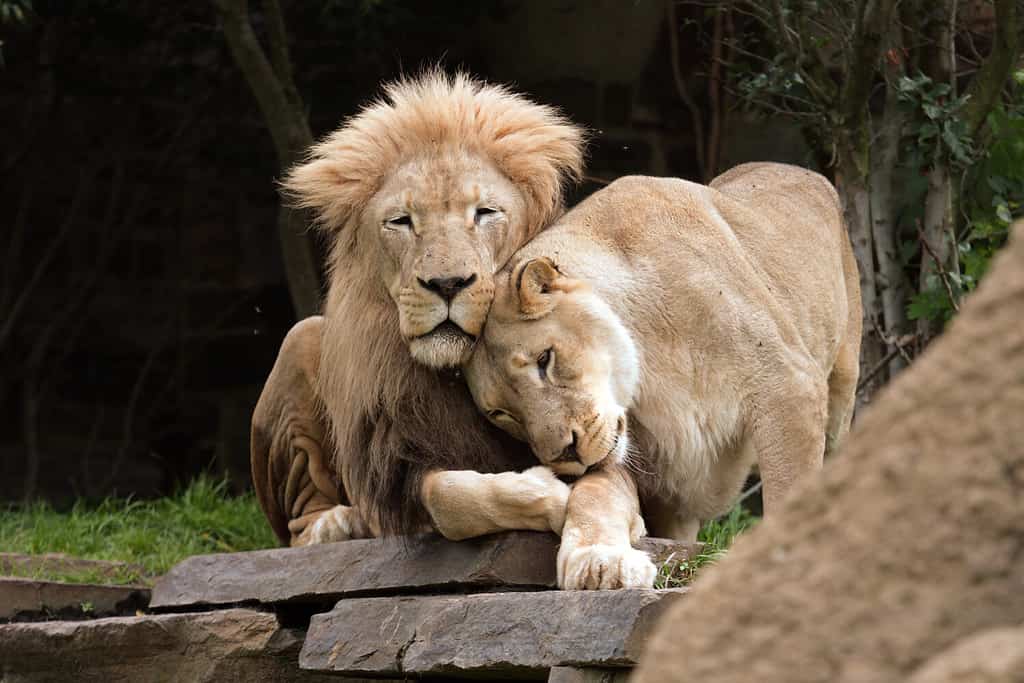
It’s the national animal, but lions don’t roam around England.
©Wicker Imaging/Shutterstock.com
1. Adder
England’s only venomous snake is shy and rarely seen, but when it is spotted, it’s epically cool with slit vertical pupils and a black zigzag running the length of its three-to-four-foot-Long body. Adders eat amphibians, birds, and small mammals. You’re most likely to spot one in the south of England’s woodland glades or heathlands.
Adder bites are rarely fatal in England, but bites that occur generally happen to feet or legs in early spring when folks walk through adder habitats just as they’re waking up from hibernation.
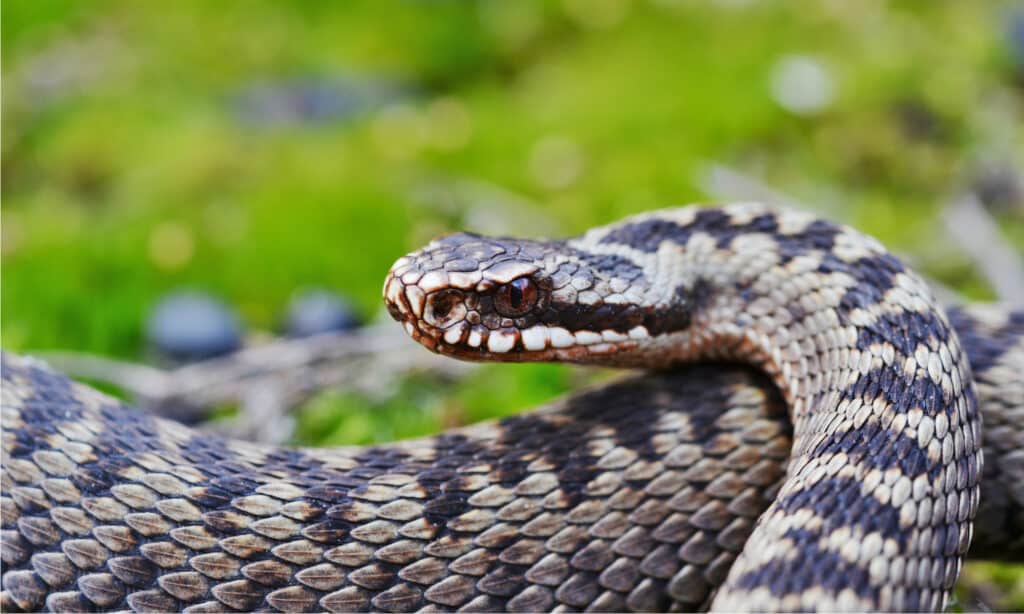
Adders are England’s only venomous snake, but bites are rarely fatal.
©Holm94/Shutterstock.com
2. English Longhorn
Roaming England’s green and pleasant land, cool longhorn cattle boast long horns that curve round to their noses. Brown and white coats finish up with a white stripe along the spine, tail, and belly. This is a large, docile cow that originated from Craven in England, where it was used as a draught animal. Today, it’s chiefly bred for beef, but cows produce high milk fats that make excellent butter, too.
Though docile, these strong cattle kick or chase if their calves are threatened.

White and brown English longhorn cattle dot England’s landscape.
©Linda Cooke Words and Images/Shutterstock.com
3. Hedgehog
Nocturnal European hedgehogs roam England at night, but their population is under threat due to declining habitats. The spiky gardener’s friend has a fluffy belly, a long nose, and a coat of spines that stand upright when they roll for protection against predators like badgers.
Hedgehogs live in compost heaps and hedgerows but increasingly in houses provided by homeowners. Hoggies hibernate over winter, but in summer, they emerge to forage as the sun sets. If you’re very lucky, you might spot Mom leading a line of hoglets behind her in search of insects.
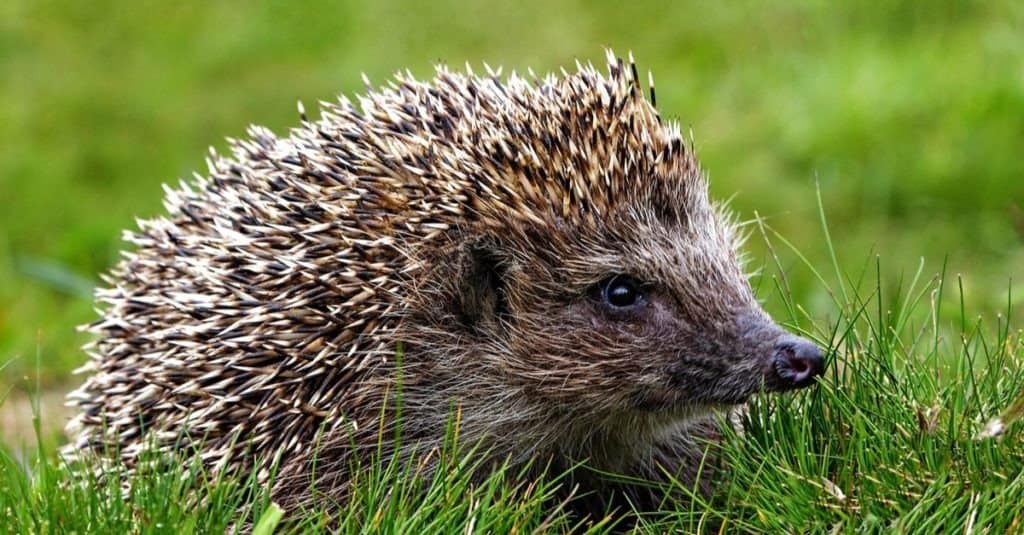
European hedgehogs emerge at night to hunt beetles, snails, and their favorite cat food.
©SakSa/Shutterstock.com
4. White-Tailed Eagle
England’s largest bird of prey is a rare sight indeed. Better known as a sea eagle, this majestic bird is one of the coolest animals in England. It roams coastal skies with a wingspan of nearly six feet and chiefly hunts fish plucked from the ocean, but it will capture other birds and mammals, too.
Once extinct in England, they’ve been reintroduced by conservationists, and a small population hunts the Isle of Wight seas. In 2020, an epic white-tailed eagle soared across London‘s skyline for the first time in over 100 years.

White-tailed sea eagles are a rare sight in England.
©Mark Medcalf/Shutterstock.com
5. Red Squirrel
Cute red squirrels are one of the coolest animals in England, but their story is a difficult one. Once, these swift and fluffy red tree pirates were common in all of England, but with the introduction of American grey squirrels, the native reds were outcompeted and infected with a disease that didn’t affect the greys.
Today, rare red squirrels are hardly ever spotted in England. A small population clings on in northern England’s pine forests, where there’s stringent grey squirrel population control, plus the Isle of Wight, where greys did not receive an introduction.

Since the grey squirrel introduction, England’s native
red squirrel
population has plummeted.
©ChamilleWhite/iStock via Getty Images
6. Bullfinch
England’s cool bullfinches are garden birds with a voracious appetite for buds. Once considered fruit crop pests, they’ve recovered their reputation, and English people love to spot a male with his unmistakable bright pink breast and rosy cheeks. A bright white behind and a black cap set this four-inch garden bird off to perfection.
With their piped whistle call and quick as a flash flitter, it can be pretty hard to spot one, but when you do, the colors are epically cool.
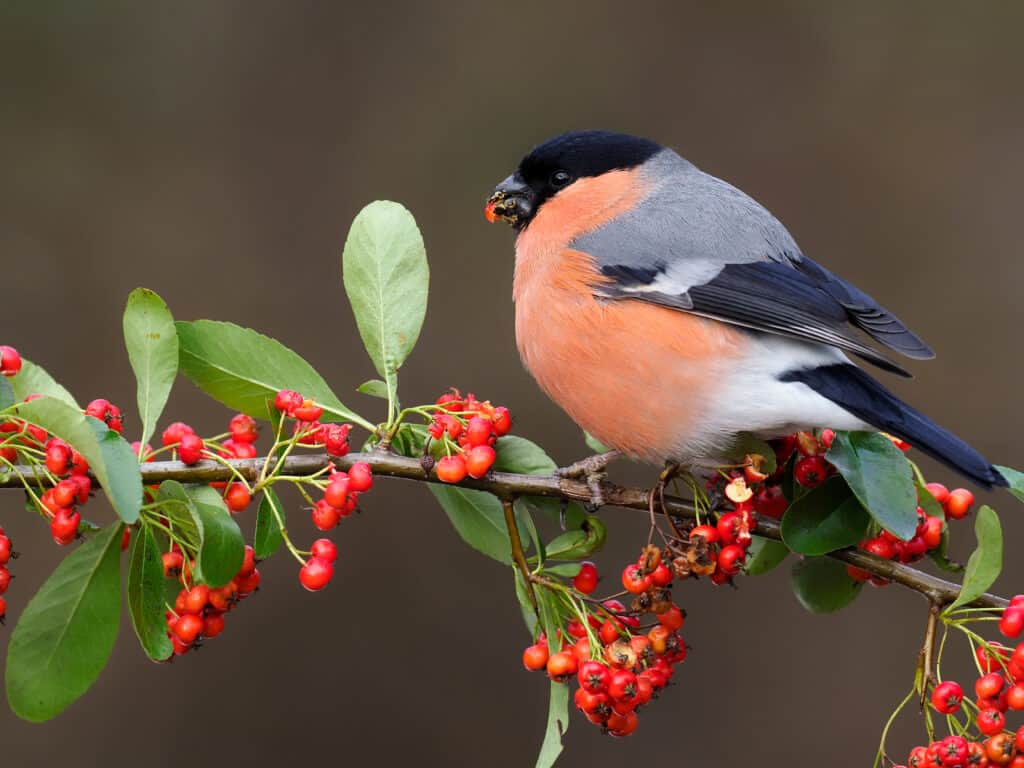
European bullfinches raid flower buds in spring and berries in winter.
©Erni/Shutterstock.com
7. Eurasian Beaver
English beavers were hunted to extinction over 500 years ago, but conservationists have brought them back to the wilds of England, specifically the Otter, Tay, and Knapdale Rivers.
Environmental architect beavers build dams to create a homely lodge for their family and, in doing so, divert water streams. This creates whole new wetland habitats that benefit the ecosystem, which makes it one of the coolest animals in England.
Crepuscular beavers have huge orange teeth, brown fur, and a flat, broad tail. They are the largest member of the rodent family at approximately 3-4 feet long. Herbivorous beavers eat aquatic plants, tree bark, and leaves.
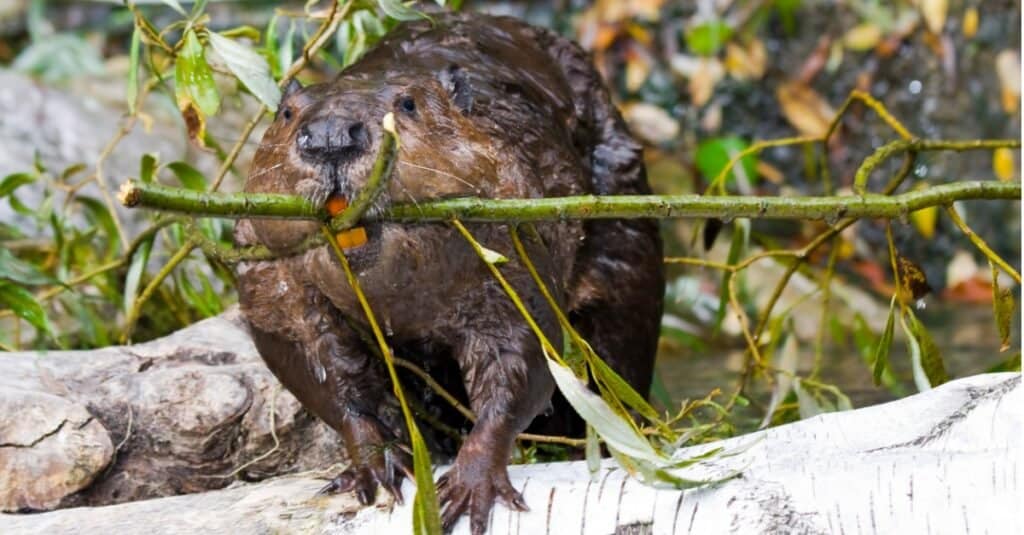
Eurasian beavers’ reintroduction to England started just recently, but it’s a resounding success.
©iStock.com/belizar73
8. Atlantic Puffin
Surely the cutest, if not coolest, animal in England is the puffin?
Puffins live on England’s south coast in land-based burrows and hunt fish such as herrings from the nearby sea. Unmissable 10-11-inch-tall puffins have incredibly bright bills that change color with the season. In mating season, their bills turn bright orange to match their legs and feet.
The UK Birds of Conservation Concern lists puffins as vulnerable because this cool bird is highly sensitive to environmental change.
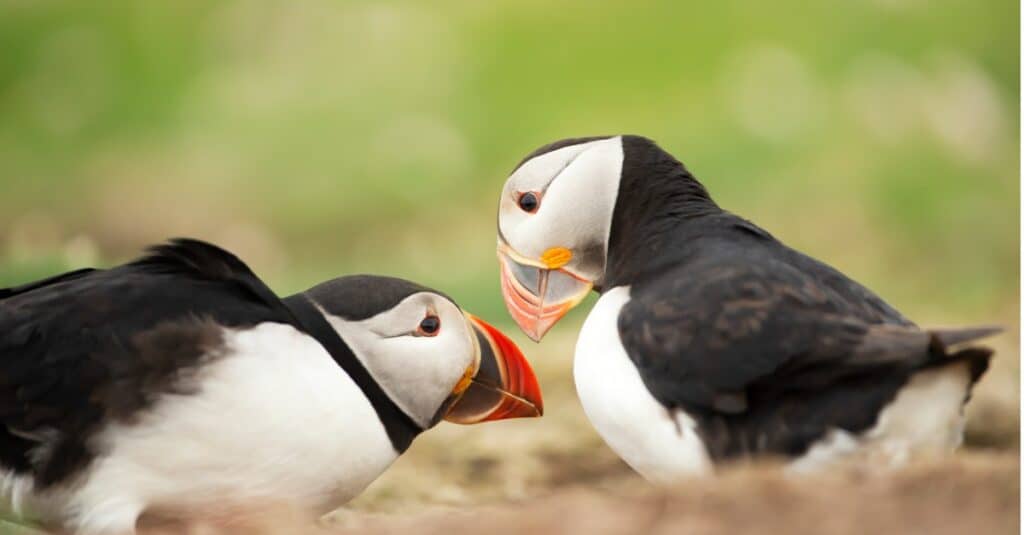
During mating season, Atlantic puffins’ beaks turn deep orange.
©Giedriius/Shutterstock.com
9. Basking Sharks
Basking sharks roam the coast of Cornwall, England, as they migrate between May and September. These cool sharks are the world’s second-largest fish, capable of reaching seven tons! They reach approximately the size of a London double-decker bus.
Despite the “shark” name tag, these gentle creatures hoover up microorganisms, plankton, and crustaceans through a massive wide-open mouth filter. They don’t hunt humans.
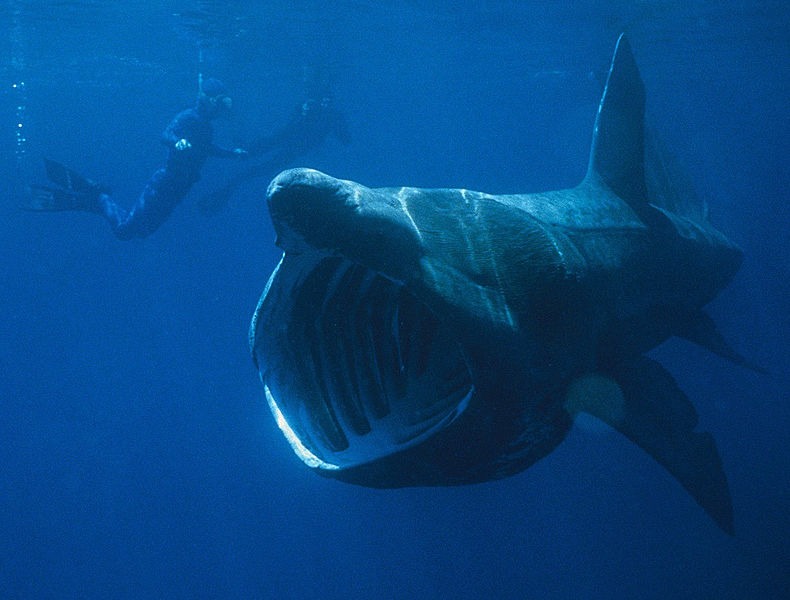
Basking sharks annually migrate past the south coast of England between May and September.
©Chris Gotschalk / Public Domain, from Wikimedia Commons, the free media repository – License
10. Red Kite
Most common in the Chilterns, red kites were pushed to the brink of extinction in the 1900s, but conservation efforts have brought them back with a bang. Since their reintroduction to the Chilterns in the mid-1990s, the English red kite population has exploded.
These 25-inch-tall birds of prey have a six-foot-wide wingspan, reddish forked tails, and formidable beaks. They chiefly eat carrion, but will swoop down on small mammals, too. Active all year round in the day, red kites glide in circles above villages and towns on the lookout for food.
Red kites prefer to nest on tall tree branch forks and have a habit of decorating their nest with oddments such as litter, clothing, and toys they’ve scavenged.

Magnificent red kites were reintroduced to England in the 1990s after near extinction in the 1900s.
©Fercast/Shutterstock.com
11. Slow Worm
It’s not slow, it’s not a worm, and despite its appearance, it’s not a snake either! Slow worms are actually smooth golden-gray legless lizards and are pretty common in English gardens, woodlands, compost heaps, and hedgerows.
This two-foot-long lizard is preyed on by birds, hedgehogs, and domestic cats, but it’s a master of escape. First, it will drop the last inch of its tail to make a quick getaway. If that doesn’t work, a slow worm releases a truly disgusting stinky fluid and then plays dead — often upside down with its mouth open.
They eat invertebrates from March to October and hibernate over winter. Warm compost heaps are a real favorite for this cool little English lizard.

England’s slow worm is actually a legless lizard capable of dropping its tail during a predator attack.
©rdonar/Shutterstock.com
12. Wild Ponies
England’s wild ponies chiefly reside in Hampshire’s New Forest, where around 5,000 roam freely, but there are lots in Dartmoor and Exmoor’s national parks and more along the white cliffs of Dover. Wild ponies reach just under five feet tall, and they’re usually chestnut, brown, or bay.
Wild ponies look sweet and docile, but they’re wild and will lash out if you approach too loudly or quickly. Although these ponies are wild, they’re actually owned! Due to ancient grazing rights, their owners can turn them out to graze freely on common land. In the New Forest, they play an essential role in managing the ecosystem, and their grass-munching habit allows lots of unusual species room to grow.
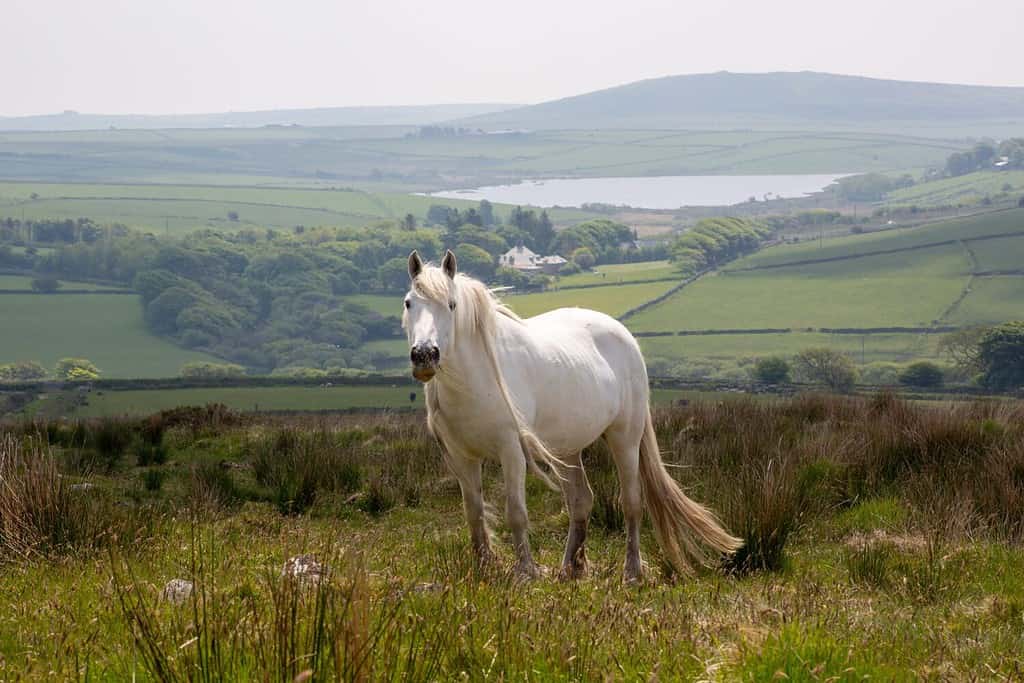
Wild ponies roam across the New Forest, Dartmoor, Exmoor, and the white cliffs of Dover.
©Paul Nash/Shutterstock.com
13. Badgers
A nocturnal black and white stripy badger captured the imagination in The Wind and the Willows novel, but the real thing is just as cool. An English icon, these omnivores live in old (some over 100 years old!) tunnel systems called a sett. Setts have several entrances, and badgers keep them immaculately clean.
Badgers forage at night for berries, vegetables, carrion, and fruits. They’re not above raiding a vegetable patch or killing hedgehogs, either. European badgers are actually England’s largest land predator!
Unfortunately, in recent years, badger persecution, due to their perceived role in spreading tuberculosis, has led to several protested culls.

European badgers live in immaculately clean setts that can date over 100 years old.
©Edward Hasting-Evans/Shutterstock.com
14. Fallow Deer
Whilst native red deer get all the press, England’s fallow deer look much cooler! Introduced by the Normans after William the Conqueror’s invasion in 1066, fallow deer have lived there for so long that people consider them an English species.
This handsome deer is almost four feet tall and just over four feet long. Its pale brown coat is freckled along its spine with white dots, and males have palmate broad antlers.
Herds of fallow deer live in deciduous or mixed forests, and they’re very popular in manor house country parks. They eat leaves, herbs, grasses, and bark, and females give birth to the cutest fawns on Earth.
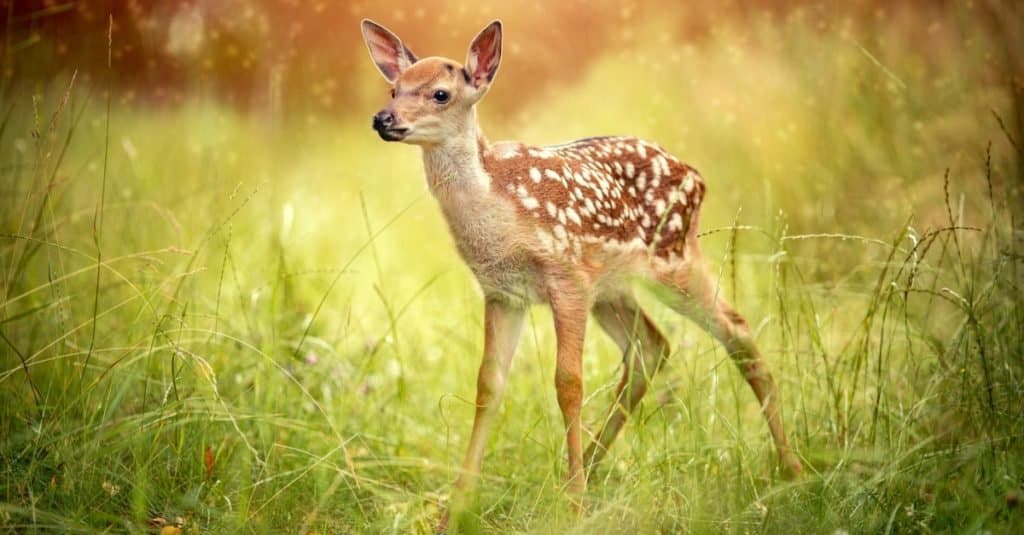
Fallow deer arrived in England after the Norman invasion.
©gudfoto/Shutterstock.com
15. Holly Blue Butterfly
England’s butterflies emerge when the weather warms up in spring, and the holly blue is one of the first on the scene. What could be cooler than a harbinger of sunny weather?
These gorgeous butterflies have bright blue wings, with females edged in black and a small black spot on the underside. Early-born caterpillars eat holly flower buds and leaves in spring, and later-borns munch on ivy, dogwood, bramble, and spindle in the summer.
Holly blues are frequently spotted in parks, gardens, hedgerows, woodlands, and churchyards across all of England, although larger populations live in the warmer southern counties.
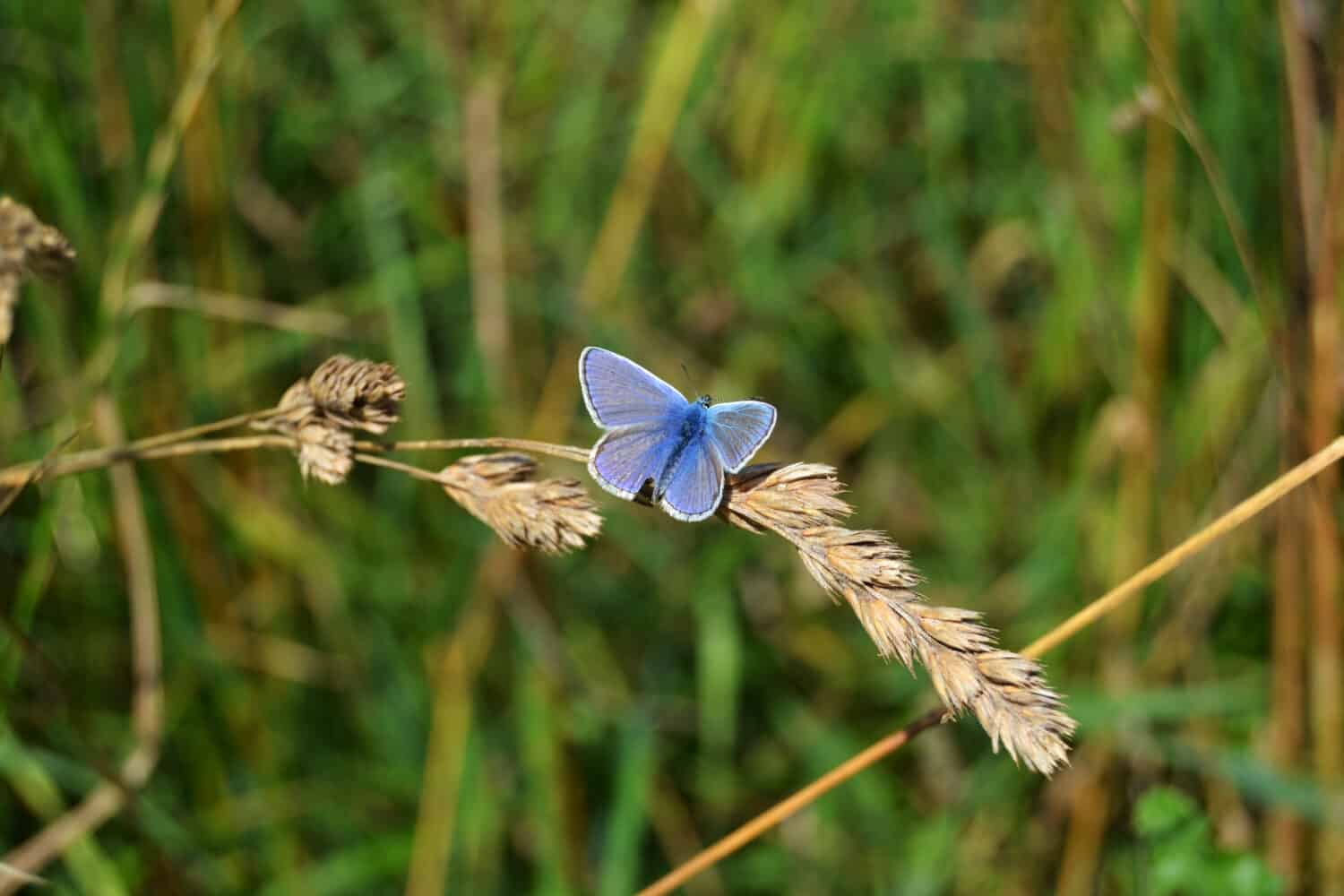
Holly blue butterflies are one of the first to emerge in England.
©AbbieC23/Shutterstock.com
16. Hoopoe
Exotic-looking hoopoe birds visit England in the summer months if they overshoot migration to Europe from Africa.
These cool eight-inch-tall birds have a pinky-tan body with black and white wings and long, black, downward-curving beaks. On its head, a hoopoe carries a magnificent pinky-brown crest. When excited, it’ll raise its crest and make small stamping motions.
Insects like spiders fall victim to hungry hoopoes, but spiders don’t need to worry too much. Only 100 hoopoes arrive in England each year.
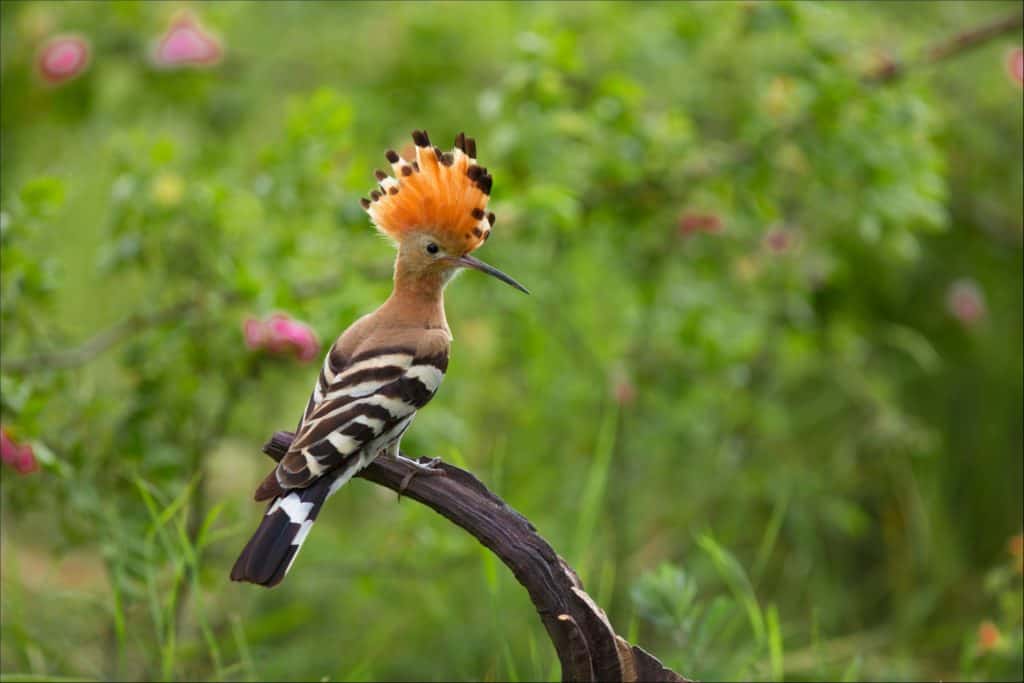
Happy hoopoes raise their orange crest. Only around 100 visit England annually.
©godi photo/Shutterstock.com
The photo featured at the top of this post is © iStock.com/Henfaes
Thank you for reading! Have some feedback for us? Contact the AZ Animals editorial team.






